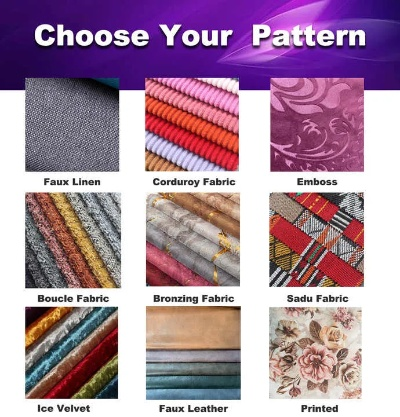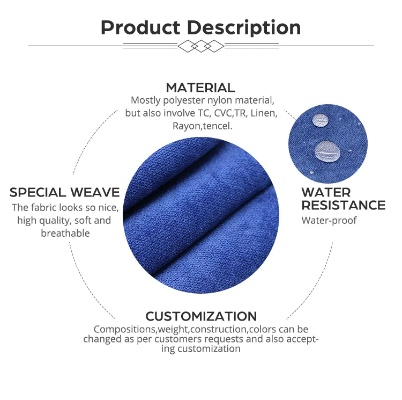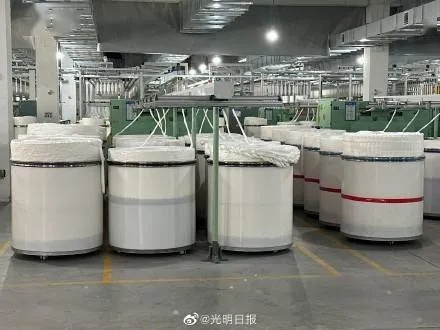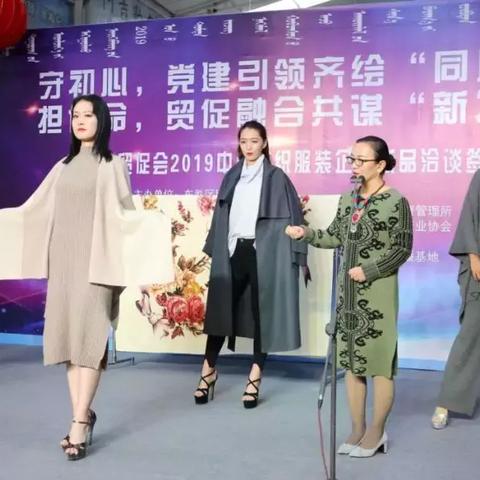The Essential Guide to Textile Fiber Contents
This essential guide provides a comprehensive overview of the various types of textile fibers and their properties, including cotton, linen, wool, silk, and synthetic materials such as polyester and nylon. Each type of fiber is discussed in detail, including its source, production process, and characteristics that make it ideal for specific applications. The guide also covers the importance of selecting the right fiber for different fabrics, such as clothing, upholstery, and carpeting, and how to determine the appropriate quality standards for each type of fiber. Overall, this guide serves as a valuable resource for anyone working with textile materials or seeking to understand the properties and uses of different fibers.
Introduction Textile fiber content refers to the percentage of different types of fibers present in a textile material. This information is crucial for understanding the quality, durability, and performance of a fabric. In this guide, we will explore the various fiber contents commonly found in textiles and provide examples to illustrate their importance.

Types of Fibers There are several types of fibers used in textiles, including cotton, polyester, wool, silk, and synthetic fibers like nylon and spandex. Each type has its unique properties that contribute to the overall performance of the fabric.
Cotton Cotton is one of the most widely used fibers in textiles due to its breathability, softness, and natural look. It's also biodegradable, making it an eco-friendly option. However, cotton can be prone to shrinkage and pilling.
Polyester Polyester is a synthetic fiber that is highly resistant to wear and tear. It's often used in sportswear and outdoor gear because of its wrinkle resistance and moisture-wicking properties. Polyester is also more durable than cotton but may not be as breathable.
Wool Wool is a natural fiber that is known for its warmth and comfort. It's often used in winter clothing and blankets due to its thermal insulation properties. However, wool is prone to static electricity and requires special care to maintain its appearance.
Silk Silk is a luxurious fiber that is known for its softness, smoothness, and luster. It's often used in high-end fashion and home decor items due to its delicate texture and vibrant colors. Silk is also hypoallergenic, making it a popular choice for those with sensitive skin.
Synthetic Fibers Synthetic fibers such as nylon and spandex offer similar properties to natural fibers but at a lower cost. Nylon is strong and durable, making it ideal for athletic wear and outdoor activities. Spandex is stretchy and elastic, making it perfect for swimsuits and other activewear.
Fiber Content Analysis To determine the fiber content of a textile, you can refer to the label or ask the manufacturer for the specific information. Here's an example table showing the common fiber contents for some popular textiles:
| Textile | Cotton (%) | Polyester (%) | Wool (%) | Silk (%) | Synthetic Fibers (%) |
|---|---|---|---|---|---|
| T-shirt | 10 | 35 | 2 | 7 | 4 |
| Sweater | 20 | 40 | 10 | 8 | 10 |
| Jeans | 30 | 35 | 10 | 5 | 2 |
| Carpet | 10 | 20 | 30 | 10 | 4 |
Example: A t-shirt made from 10% cotton, 35% polyester, and 20% wool would have a higher level of cotton compared to a sweater made from 20% cotton, 40% polyester, and 10% wool. Similarly, a pair of jeans made from 30% cotton, 35% polyester, and 10% wool would have a higher level of cotton compared to a carpet made from 10% cotton, 20% polyester, and 30% wool.
In conclusion, understanding the fiber content of a textile is essential for making informed purchasing decisions. By analyzing the percentages of different fibers, you can determine the suitability of the fabric for your needs and preferences.
在讨论纺织品纤维含量时,我们首先需要了解各种纤维名称及其背后的含义,本文将围绕纺织品纤维含量的名称展开,通过英文案例说明来加深理解。
纺织品纤维含量的名称及分类

- 天然纤维:如棉花、羊毛、蚕丝等。
- 人造纤维:如涤纶、尼龙等。
- 合成纤维:包括再生纤维和特种纤维。
案例说明
天然纤维案例:棉花
(案例)棉花是一种常见的天然纤维,以其柔软、吸湿性好、保暖性强等特点而受到广泛欢迎,棉花纤维含量通常以百分比表示,例如市场上常见的纯棉面料,其纤维含量通常在60%-80%之间。
在纺织过程中,棉花纤维的含量决定了面料的手感、吸湿性以及保暖性能,高含量的棉花纤维可以制作出柔软且舒适的衣物,而低含量的棉花则可能更适合制作夏季轻薄衣物。
人造纤维案例:涤纶
(案例)涤纶是一种人造纤维,以其高强度、高耐磨性、易洗快干等优点而著称,涤纶纤维含量通常以化学成分表示,例如常见的涤纶面料,其纤维含量可能达到90%以上。
在纺织过程中,人造纤维的应用广泛,可以制作各种衣物,如衬衫、外套、裤子等,由于涤纶具有优良的抗皱性和抗老化性,使得涤纶面料在市场上具有很高的竞争力。
纺织品纤维含量名称的英文表达
- 天然纤维名称:天然棉花(Natural Cotton)、天然羊毛(Natural Wool)等。
- 人造纤维名称:合成纤维(Synthetic Fibers)、再生纤维(Recyclable Fibers)等。
- 合成纤维分类名称:涤纶(Polyester)、尼龙(Nylon)等。
纺织品纤维含量名称的英文表格说明
以下是纺织品纤维含量名称的英文表格说明:
| 名称 | 描述 | 示例 | 纤维含量范围 |
|---|---|---|---|
| 天然纤维 | 如棉花、羊毛等 | 天然棉花 | 60%-80% |
| 人造纤维 | 如涤纶、尼龙等 | 人造涤纶 | 合成纤维含量范围示例 |
| 合成纤维分类 | 如再生纤维、特种纤维等 | 再生纤维面料 | 根据具体成分确定 |
纺织品纤维含量的名称反映了纺织品的性质和用途,在讨论纺织品时,了解各种纤维名称及其背后的含义是非常重要的,通过案例说明和英文表格说明,我们可以更好地理解纺织品纤维含量的名称及其应用,随着科技的发展和人们对纺织品需求的不断变化,纺织品纤维含量的名称也可能会发生变化。
Articles related to the knowledge points of this article:
The Global Fabrics Expo A Journey to the Heart of Canadian Textiles
The Beauty of Textiles in Jinzhou City
Exploring the World of Textiles:A Glossary of Different Fabric Materials
An Encyclopedia of Textile Design Arrangements
Navigating the Global Trade Landscape with Nanjing Hanxiaochen Textiles



